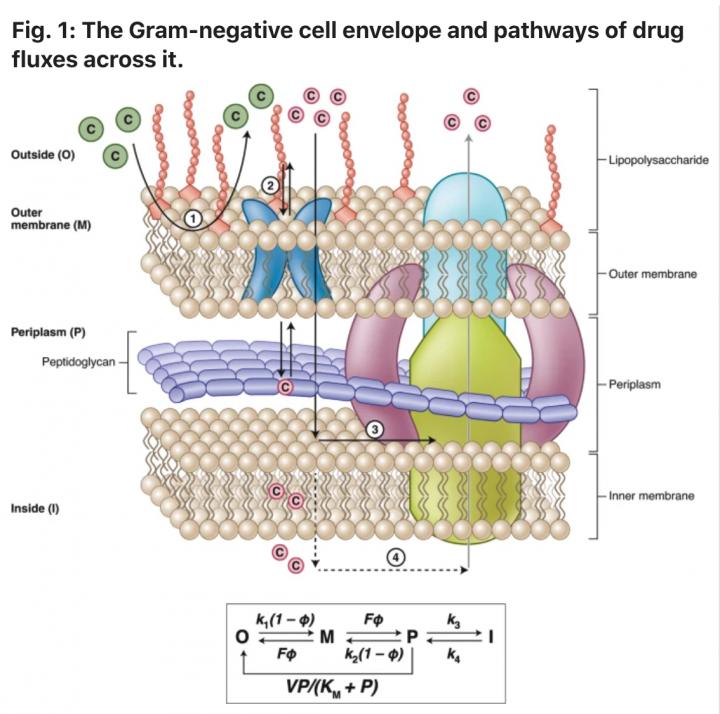
Credit: Zhao, S., Adamiak, J.W., Bonifay, V. et al. Defining new chemical space for drug penetration into Gram-negative bacteria. Nat Chem Biol 16, 1293-1302 (2020). https://doi.org/10.1038/s41589-020-00674-6…
A collaborative research team from the University of Oklahoma, the Memorial Sloan Kettering Cancer Center
and Merck & Co. published an opinion article in the journal, Nature Chemical Biology, that addresses the gap in the discovery of new antibiotics.
“The rapid spread of antibiotic-resistant bacteria in clinics challenges our modern medicine and the traditional approaches to antibiotic discovery fail to generate new drugs needed for treatment of antibiotic resistant infections,” Zgurskaya said. “The current COVID-19 pandemic further magnifies this problem because patients in intensive care units are particularly vulnerable to such infections … (our) team is working on developing new tools to guide the discovery and optimization of new antibacterial agents.”
Zgurskaya adds that the increasing frequency of antibiotic resistance has created a significant health care challenge and will progressively worsen without innovative solutions.
“In particular, Gram-negative pathogens present both biological and chemical challenges that hinder the discovery of new antibacterial drugs,” Zgurskaya said. “As a result of these challenges, intensive screening campaigns have led to few successes, highlighting the need for new approaches to identify regions of chemical space that are specifically relevant to antibacterial drug discovery.”
In the article, the research team provides an overview of emerging insights into this problem and outline a general approach for researchers and scientists to address it.
“The overall goal is to develop robust cheminformatic tools to predict Gram-negative permeation and efflux, which can then be used to guide medicinal chemistry campaigns and the design of antibacterial discovery libraries,” Zgurskaya said.
###
The research was supported with funding from the U.S. Department of Health and Human Services and the National Institutes of Health. The article, Defining new chemical space for drug penetration into Gram-negative bacteria, is available in the November 2020 issue of the academic journal, Nature Chemical Biology.
Zhao, S., Adamiak, J.W., Bonifay, V. et al. Defining new chemical space for drug penetration into Gram-negative bacteria. Nat Chem Biol 16, 1293-1302 (2020).
https:/
Media Contact
Helen Zgurskaya
[email protected]
Original Source
https:/
Related Journal Article
http://dx.




